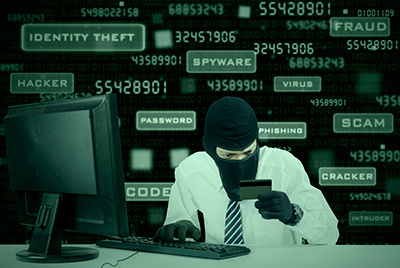Also due to malpractice by operators (intentional or accidental) IT security is susceptible to being tricked into deviating from secure procedures through various methods.
Cyber security is of growing importance in computer systems because of growth in the area of the internet, wireless networks (WiFi) and smart devices.
There are many types of viruses and sets of malicious software.
The types of viruses include:
1. Boot Sector Viruses
This virus could appear on the "Master Boot Record" but due to the evolution of the internet these viruses are now much more obsolete than they were when floppy disks were used to boot a computer and are now much rarer.
2. Web Scripting Viruses
These viruses breach your computer through your web browser security, allowing the hacker to leave client-side scripting into the web page, bypassing access controls and stealing your information from your browser. This is a problem on many sites such as social media sites.
3. Browser Hijackers
These viruses are when your web browser is automatically sent to a particular website and is the most common way Ransom-ware hijacks your browser. While it may look threatening it can be easily be countered by closing the tab that it has opened on without touching anything on the website as this tactic is mainly used to increase income for the hacker(s) via web ads.
 |
| Image reference (13/01/2018): https://www.techinside.com/abd-kredi-kurulusundan-143-milyon-kisinin-verisi-calindi/ |
This virus inserts itself into the memory of your computer and can then do multiple actions. One of its more dangerous features is its ability to leave the originally infected file and it can run on its own.
5. Direct Action Viruses
This virus only starts when you have activated an infected file, the load is added to your computer and the virus becomes active but this virus takes no action unless the file is implemented again or activated again by the user.
6. Polymorphic Viruses
This virus has the ability to evade antiviruses because the antivirus programs detect the presence of any virus by detecting its code. The virus changes its code every-time the infected file is activated. This makes it nearly impossible for any antivirus to track it down.
7. File Infection Viruses
These viruses, contrary to the name, do not always attack or use the help of files. Although, the starting point of the file infector is mimicking a file and re-writing the file (code).
8. Multipartite Viruses
These viruses use both methods of infecting your computer depending on the software you use or the files that exist on your computer. The methods they use to get onto your computer include sending a file or "payload" to your computer or they attack through your internet browser.
9. Micro Viruses
This virus appears in the form of a word document through a dodgy email which seemingly links the user to pornographic websites while actually sending them to malicious websites. The most known micro virus is called "Melissa" and not only do these viruses send you them through email but also it uses your contact list to send copies to those who are in contact with you.
 |
| Image reference (15/01/2018): https://thehackernews.com/2014/06/new-banking-malware-with-network.html |
1. Spyware
A software that gathers the users information without their knowledge and may send that information to another entity without the user's consent and could also take control over the device without the users knowledge.
2. Malware
Malware (short for malicious software) comes in many different forms such as: Adware, Bot software, Bug software, Rootkit software, Trojan Horse software, Worm Software and Spam. Malware can also be made of executable code, scripts, active content and other software. Malware is shown by its malicious intent, acting against the computer user and causes intentional harm rather than an unintentional harm due to a deficiency.
3. Ransom-ware
A type of malicious software that threatens to publish victims data and block access or destroy data if a ransom isn't paid. A few forms of ransom-ware are easily reversed with the technical knowledge to do so, some are much more advanced. The more advanced ransom-ware are known for encrypting files so that they are inaccessible and demanding payment to decrypt them.
4. Viruses
A type of malicious software that replicates itself by modifying other computer programs and inserting its code. the infected computer programs can include data files or the 'boot' sector of a hard drive.
While there are many types of viruses, they are still stoppable with the use of Anti-Virus software or hardware, these programs are designed to detect and destroy any malicious software or viruses that are hidden on your computer.
Alongside protection against malicious programs, cyber security also can be used to show censorship and age ratings in order to protect children on the internet.
This can be done in multiple ways. For example:
1. Child lock systems
Child lock systems allow Parental Controls to let parents set controls for their children's computer, e.g: blocking them from 18+ sites and disallowing them to see things that the parents do not want them to see.
2. Age rating systems
A classification set to websites and products specifying a minimum age for a person using it. for example: a shooting game has a rating of 18+ while a puzzle game has the rating of 3+.
These ways of censoring content allow the protection of children from finding inappropriate or harmful content on the internet.
No comments:
Post a Comment